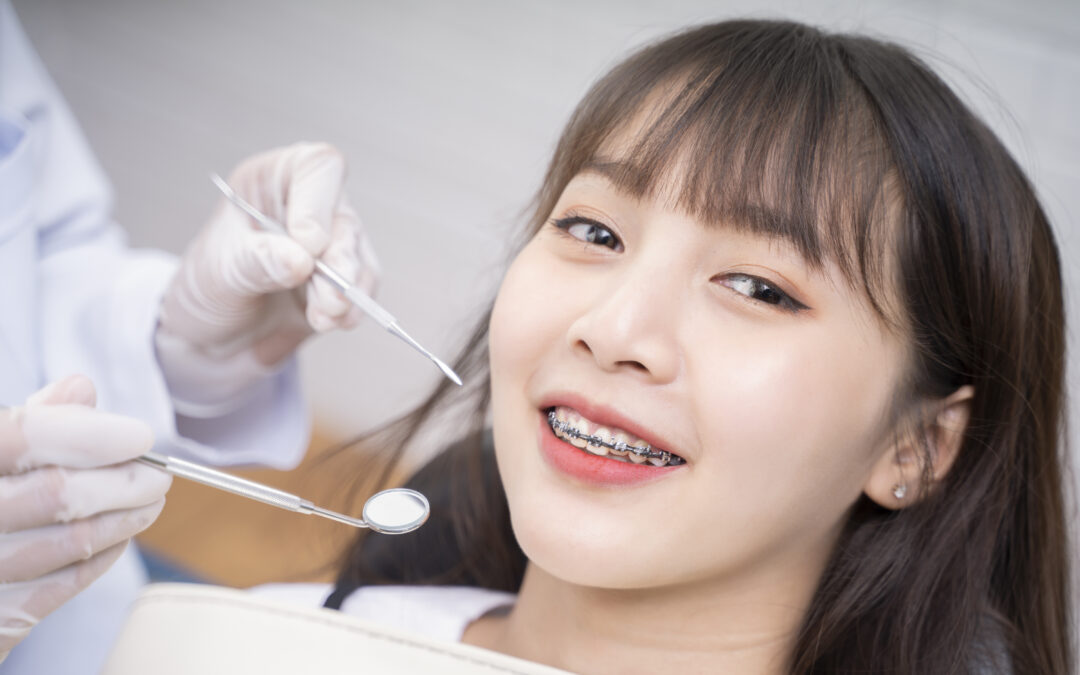The definition of an orthodontic appliance is a device that is tailored around the dimensions of our smile and helps make it more uniform by adjusting and repairing a number of functional and aesthetic faults.
But what exactly does the term “orthodontics” signify, and what processes are used to realign the teeth? It’s good to be aware of these before getting any orthodontic device. Everywhere, orthodontic appliances are utilized, whether there is only minor dental misalignment or full tooth loss as a result of external trauma or decay, braces in Innisfil or any other treatments are used.
Let’s explore orthodontic appliances in more detail to learn about their varieties and purposes.
Types of Orthodontic Appliances
The two main types of orthodontic appliances used to treat all disorders are permanent orthodontics in Innisfil appliances and removable orthodontic appliances.
-
-
Permanent Appliances
By virtue of its designation, permanent orthodontic equipment serves as a permanent remedy for any dental issue connected to orthodontics. These orthodontic appliances cannot be removed while you are receiving treatment, and they are typically permanently bonded to your teeth to promote speedy healing and a stunning, perfect smile.
Braces, dental implants and bridges are some popular permanent orthodontic appliances. There are five different types of braces near you and eight different types of ortho brackets available on the market to provide a permanent answer for any orthodontic problem, most notably misalignment, therefore, the majority of people are undoubtedly aware of braces and brackets, but they may not be aware of all of their uses in orthodontics.
-
-
Removable Appliances
Removable orthotic appliances can be worn for a few hours a day to passively attain a stunning smile, or they are mainly used for oral protection. However, they are not permanently fixed to your teeth. Retainers, dentures, and mouthguards are some popular removable orthodontic products that help us deal with tooth loss, fractured teeth, or sleep apnea.
Appliances That Orthodontic Treatments Include
Among the common orthodontic appliances used by orthodontists are crowns, mouthguards, braces, dentures, bridges, and dental implants. Numerous pieces of orthodontic equipment are used in orthodontics near you to treat dental issues. The recommendation of a certain orthotic appliance for the patient depends on the type of dental condition, the harshness of the orthodontic issue, urgency, the client’s level of commitment, and money.
Minor dental issues that can be resolved with simple treatment options like night guards and Invisalign. If a more complex orthodontic problem necessitates an advanced orthodontic process, however, orthodontists may recommend permanent solutions like braces, dental bridges, and dental implants. There are also a few exceptions; for adults, dentures are advised to prevent any side effects from braces.
What are They Made of?
It depends on the device. Typically, various mixes of nylon, acrylic, porcelain, and resin are used to create orthodontic appliances. After a thorough examination, most orthodontists are required to employ these materials to create the recommended orthodontic appliance. Additionally, permanent orthodontic appliances, such as braces and dental bridges, are connected to the teeth using metallic wires.
The Function of Orthodontic Appliances
The primary purpose of orthodontic appliances is to rectify any anomalies in the relationship of the teeth, including gaps, crowding, crossbite, misalignment, and overbite, among others. Each and every orthotic appliance must offer a particular defense or remedy against potential damage or tooth issues. When a person has lost numerous teeth and is unable to speak or eat correctly as a result, dentures are recommended. After spending only a few dollars on dentures, they can easily resume their normal eating or speaking routines by wearing them.
Ready to Get the Smile of Your Dreams?
But keep in mind that the day your braces come off will be the day your teeth are straightest. Even with faultless retainer use, some minor alignment alterations are common. Wear your retainer as directed by Innisfil Orthodontics to minimize these changes as much as possible. Please pay close attention to the use, maintenance, and care directions.


